"Transorma" letter combination on envelope
During one of the club evenings of the local stamp club a fellow member gave me a letter, with the question if I could use it for my collection. A quick glance learned that the envelop had a cancellation stamp "40 jaar TT races" (40 years Dutch TT) in a very nice quality. Thus it was a item that fits in my collection motorcycles. I already had this stamp, but not so nice and the envelope is torn. This made it for sure a nice item for my collection. Aim of collecting is not only to get it as complete as possible, but also to strive after the highest possible quality of stamps and other items.
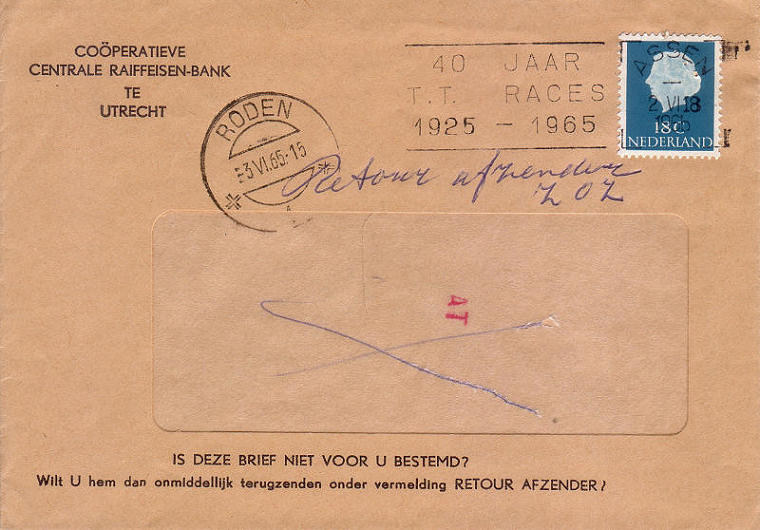
At home I looked more carefully to the envelope and, apart from the TT-stamp, the hand written message "return to sender" and an extra stamp from Roden draw my attention. And in red the letter combination AT. Some asking around learned me that this was the stamp of a Transorma sorting machine. But what is a Transorma? How does it work? How does the stamp come on the envelop? What are the effects?
What is a Transorma machine?
Some research in the library of the Royal Dutch Association of Philatelic Clubs (KNBF) gave some information about this first sorting machine.
Until the 20-ies of the former century
every post office had a counter where the employee did his job, a desk with a sorting cabinet. With the sorting cabinet a post official could do up to 1800 pieces per hour.
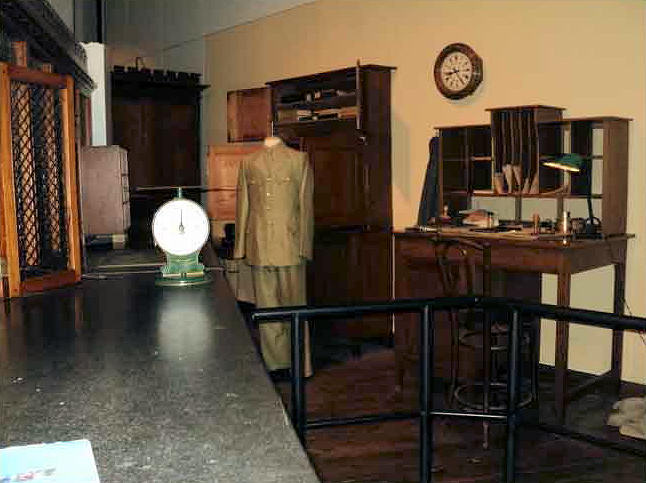
Depending on the number of pigeon holes (compartments) in many cases this was only a rough sorting. Incoming mail was collected on a big table, and a few employees had to sort the mail on walking route. This was all very inefficient and tiring, standing up for longer time.
Head Engineer Mr. Marchand thought that it should be possible to do it easier and faster. Together with Mr. Andriessen, professor on the Technical University of Delft, he developped a machine that could sort post. A prototype was built at the company N.V. de Pletterij vh. L.I. Enthoven & Co in Delft. The machine got the name TranSorMa: Transporting, Sorting, Marchand and Andriessen. After some initial problems the first machine had been placed in Rotterdam in 1931 and put to work.

With the aid of this machine a post offical could sort 3000 pieces of mail per hour. Production, by order of Technical Company Marchand-Andriessen, was transferred to Werkspoor in Utrecht. New machines were installed in other large cities in the Netherlands, and also exported. Transormas have been used in England, United States, Belgium and Brazil. In Linköping in Sweden tests have been done, but the machine never came really to work.
How does the Transorma work?
The Transorma machine consists roughly of 4 sections: input section with keyboard, elevator, letter carriers and sorting pigeon holes. Behind the keybord is the place where the operator of the machine, the Transormist, does his job. Every Transormist gets its own key that he puts into the machine when he starts working. A box with letters is put in the storage (A). One by one the Transormist takes the letters in his left hand and reads the place where it must be sent to. When he drops the letter into slit (B), he types the correct number code on the keyboard (C).

Now 2 things happen: during the typing the first passing letter carrier gets the correct binary code (1) for sorting pigeon hole and and slope of the opening (2), and the letter slides along the keyposition were a code is stamped on the envelop. This code is put transverse on the letter. The key shown below, code ZV, belonged to a Transormist from The Hague.
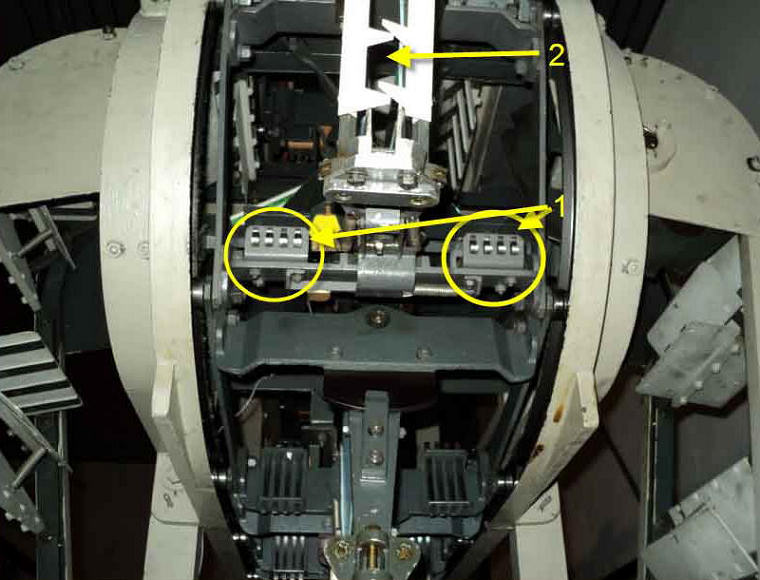

Key of a Transormist from The Hague
By some mechanism the letter is transferred from the input slit to the elevator (X). This vertically moving elevator takes the letter up, where it is put in the letter carrier (Y). This letter carrier, which is connected to an endless chain, transports the letters to above the pigeon holes.
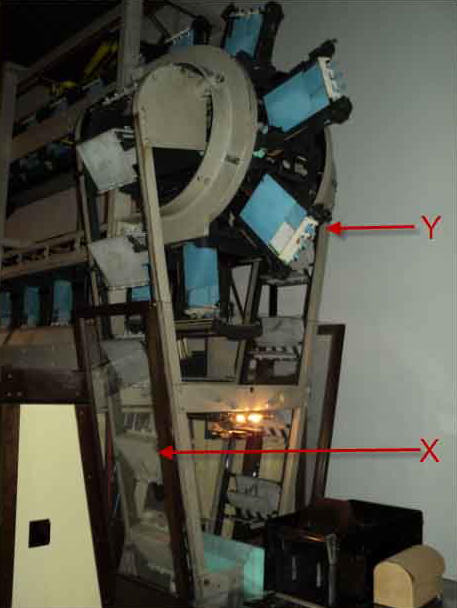
To get the letter in the correct pigeon hole the letter carrier is put in position so that when the carrier is opened, the letter falls into the right slit and comes in the right pigeon hole.
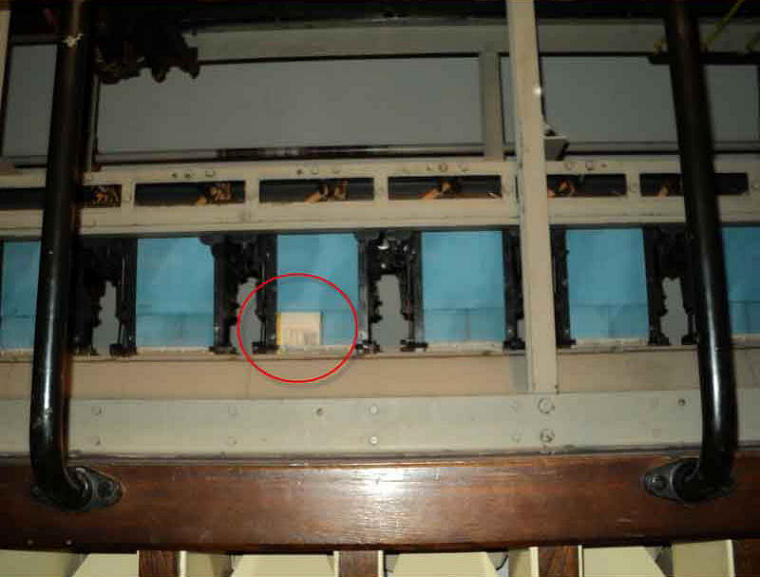
In the scheme below the postion of the letter carrier (5, lower one) makes that the letter falls into the middle slit (7) of the pigeon holes on the left side of the machine.
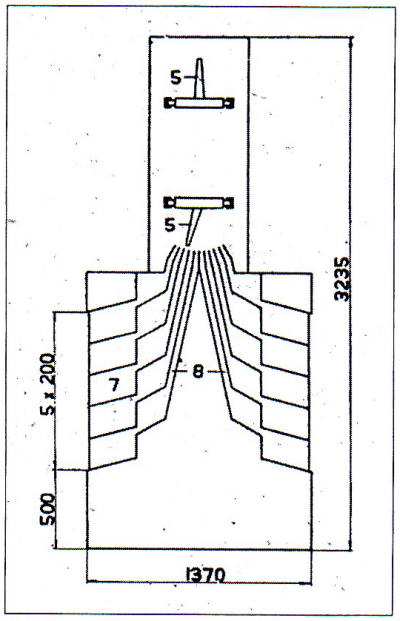
Scheme of the actual sorting part

And this is how it looks in reality
When the letter carrier is above the row that corresponds with the typed code the letter is released. Through the slit the letter slides into the pigeon hole. When the pigeon hole becomes too full or when all mail is sorted, the mail from the pigeon holes is put into sacks and send to the various places.

The pigeon holes where the sorted mail ends in
The Transorma machine is not only used for sorting outgoing mail. Also the incoming mail has been sorted with these machines. All bigger places which had a Transorma at their disposal were divided in different delivery areas and walking routes. The incoming mail was, depending on the address, provided with a walking route code and put in the correct pigeon hole through the letter carriers. The outgoing mail for Antwerp and incoming mail for walking route 29 both got the code 29. After all the incoming mail had been sorted in this way, the postman still had to order all mail for route 29 manually on street and number.

How comes the stamp on the letter?
As said earlier, every transormist had its own personnal key. This key had to be put above the keyboard at the start of the sorting work. At the moment that the Transormist let go the letter and at the same time typed in the numerical code the letter was imprinted with the key. Mostly an imprint in red ink. During the test the keys were printed horizontally:
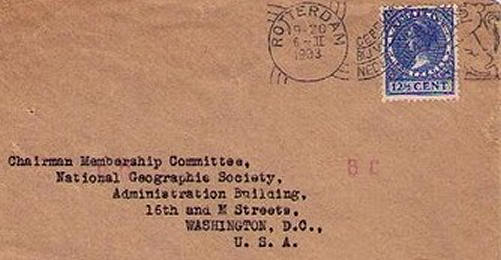
Postal item with horizontal Transormist stamp
Later they were put transverse (vertical) on the envelop. To each city which had a sorting machine a series of letter combinations was assigned. For instance Utrecht got the combinations from AA til BL. On the letter shown on top of this article you can see that it has been send by Coöperatieve Centrale Raiffeisenbank in Utrecht, and it carries the code AT, thus correct.
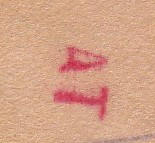
What are the effects?
The invention and introduction of the Transorma sorting machine had various effects that were not always positive only. Off course the sorting was done quicker and the sorters did not have to work standing up during longer time to process the incoming mail. But 3000 pieces of mail compared to 1800 manually sorted items is not a big increase. Doing your work standing up is not really pleasant, but is it more annoying than working on the Transorma which made a lot of noise? Due to the noise that the Transorma made the Transormist was only allowed to work for one hour consecutively on the machine. The saving in personnel was thereby not really high. Already during the installation of the first machine people were convinced that the benefit was not so much in savings, but in improvement of the quality of the sorting process.
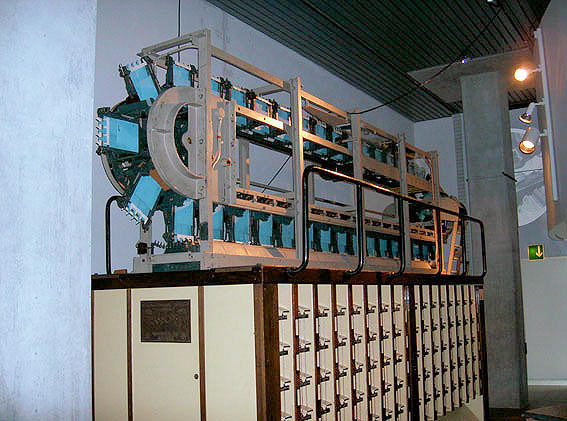
Because every postal item was provided with an imprint of the personal key, the possibility to check the sorting was much larger. When a postal item had been provided with a wrong or no number code, because the simultaneous actions of let go the letter and type in the code during the input went wrong, the letter still got the imprint of the Transormists key. This is not an imaginary case, because the Transorma had a certain speed at which the letter carriers travelled around. The Transormist had to process his letters in the same rhythm. Letters that were not or wrongly coded ended in pigeon hole 0.
The presence of the personal key imprint made it possible to speak to sorting employees, Transormisten, when they made frequent errors. Although it became a sport between the Transormists mutually to see who could handle the largest number of letters in an hour with the least number of mistakes, the work certainly required a larger concentration on the job. Would this have led to more stress? Has there anytime been done research to the illness of sorting employees before and after the introduction of the Transorma?
For post employees in the 30-ies and later the introduction of a machine like this will have been a hugh change-over.
What the effect can be of a small red imprint! For those collectors who want to know more about all characteristic features that can be found on a letter this is a very interesting collecting area.

Envelope with German personalised stamp with image of a Transorma
For those who want to know more about the Transorma:
-
Sound of the machine: http://marcoraaphorst.nl
- History of the machine: www.geschiedenis24.nl
- General: postalhistorycorner.blogspot.com
Nico Helling
Top - Back to former page - Home |















